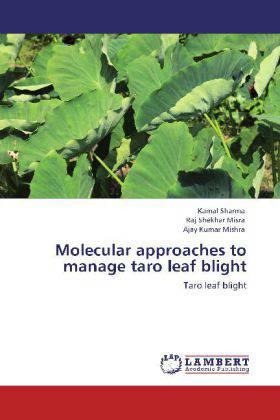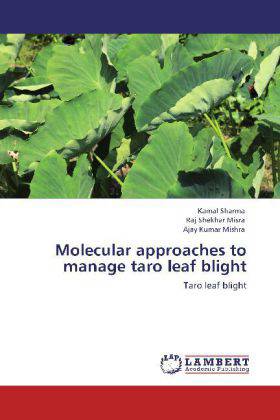
- Afhalen na 1 uur in een winkel met voorraad
- Gratis thuislevering in België vanaf € 30
- Ruim aanbod met 7 miljoen producten
- Afhalen na 1 uur in een winkel met voorraad
- Gratis thuislevering in België vanaf € 30
- Ruim aanbod met 7 miljoen producten
Zoeken
Molecular approaches to manage taro leaf blight
Taro leaf blight
Kamal Sharma, Raj Shekhar Misra, Ajay Kumar Mishra
Paperback | Engels
€ 115,95
+ 231 punten
Omschrijving
Taro leaf blight caused by Phytophthora colocasiae is a major constraint to taro cultivation. To manage taro leaf blight and design breeding programme, it is crucial to recognize the genetic diversity of taro and P. colocasiae. We studied genetic structure of taro and P. colocasiae in India. Biochemical alterations in taro plants infected by the P. colocasiae were studied and changes in peroxidase, β-1,3-glucanase, L-phenylalanine ammonia-lyase, total phenol and total sugar were evaluated. We employed suppressive subtractive hybridization, high through put DNA sequencing and bioinformatics to identify the defense related genes in taro induced by P. colocasiae infection. Two putative resistance genes and a transcription factor were identified among the upregulated sequences. Our study illustrated that identified genes will be useful to engineer disease protection in taro.
Specificaties
Betrokkenen
- Auteur(s):
- Uitgeverij:
Inhoud
- Aantal bladzijden:
- 268
- Taal:
- Engels
Eigenschappen
- Productcode (EAN):
- 9783846507308
- Verschijningsdatum:
- 7/05/2012
- Uitvoering:
- Paperback
- Formaat:
- Trade paperback (VS)
- Afmetingen:
- 152 mm x 229 mm
- Gewicht:
- 394 g

Alleen bij Standaard Boekhandel
+ 231 punten op je klantenkaart van Standaard Boekhandel
Beoordelingen
We publiceren alleen reviews die voldoen aan de voorwaarden voor reviews. Bekijk onze voorwaarden voor reviews.








